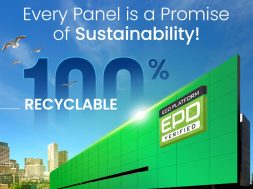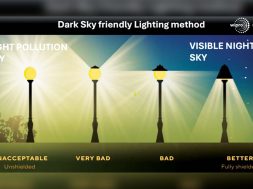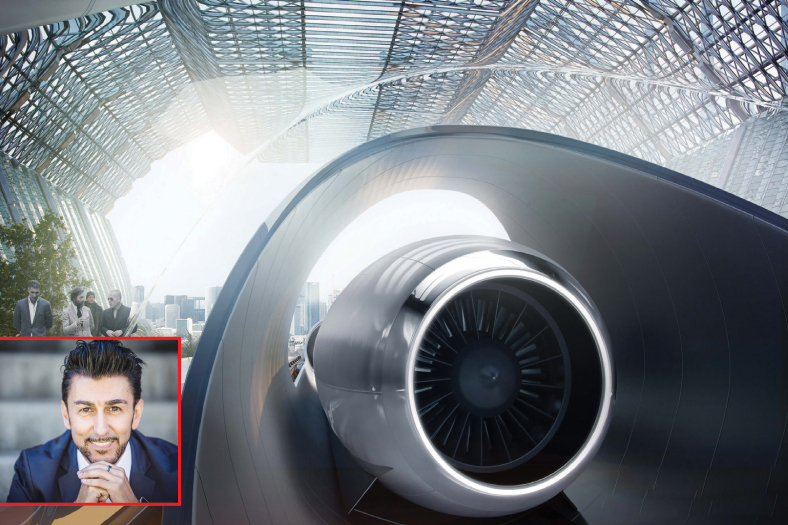The Path towards Sustainable Construction [Mar 2012]
“Buildings are one of the major pollutants that affect urban air quality and contribute to climate change. Hence, there is the need to design green buildings the essence of which would be to address all these issues in an integrated and scientific manner”, comments Rakesh Sanghvi
The real estate sector has seen a total investment of Rs. 8,100 crore ($1,700 million) across 44 deals in the year 2010 as compared with Rs. 4,503 ($925 million) across 32 deals in 2009. According to Cushman & Wakefield, 240 million sq. ft of commercial property and about 4.25 million units of residential property will be required to meet the demand over 2010-2014. The demand for qualitative and affordable housing over recent years is being driven in Mumbai due to rapid urbanisation coming out of a growing population and the rural-urban migration. The other major factor is the burgeoning middle class growth encouraged by rising income levels. This is seen as a primary driver for the development of the affordable housing sector as the country’s income pyramid changes to accommodate this mass housing which mean constructing more units at the cost of the environment.
India’s green building footprint has grown from 20,000 sq ft in 2001, to projects covering to 888 mn sq feet in 2011. There are 1270 registered green buildings and 195 certified green buildings in the country till date. India is likely to see about 1 million ‘green jobs’ in the next two years – this means employment opportunities for lawyers, policy writers, carbon finance consultants, business risk analysts, architects and engineers adept in green building norms. The biggest potential recruiter is the real estate sector.
Sustainability is the use of limited natural resources in such a way that we do not run out of them in the future. Buildings have major environmental impacts over their entire life-cycle. Resources such as ground cover, forests, water, and energy are depleted to construct and operate buildings. Resource-intensive materials provide the building envelope and landscaping adds beauty to it – in turn using up water and pesticides to maintain it. Energy-consuming systems for lighting, space conditioning and water heating provide comfort to its occupants. Hi-tech controls add intelligence to ‘inanimate’ buildings so that they can respond to varying conditions, and intelligently monitor and control resource use, security, and usage of fire systems etc. in the building. Water is another vital resource for the occupants, which gets consumed continuously during building construction and operation. Several building processes and occupant functions generate large amounts of waste.
Energy consumption in Indian buildings is expected to increase substantially due to economic growth, construction growth and human development. The demand for energy to run appliances such as TVs, air conditioning and heating units, refrigerators and mobile phone chargers will increase substantially as living standards rise in India. Also the growth in commercial sector and the shift from rural to urban living will continue to take place. This will result in a substantial increase in resultant emissions from the buildings sector alone and need concerted efforts to bring down the energy consumption by buildings through various measures.
Thus, buildings are one of the major pollutants that affect urban air quality and contribute to climate change. Hence, there is the need to design green buildings the essence of which would be to address all these issues in an integrated and scientific manner. It is true that it costs a little more to design and construct a green building. However, it is also a proven fact that it costs less to operate a green building that has tremendous environmental benefits and provides a better place for the occupants to live and work in. Therefore, the challenge of a green building is to achieve all its benefits at an affordable cost.
A green building depletes as little of the natural resources during its construction and operation. The aim of a green building design is to:• Minimise the demand on non-renewable resources and maximise the utilisation efficiency of these resources when in use• Maximise reuse and recycling of available resources• Utilisation of renewable resources.
Green Building maximises the use of efficient building materials and construction practices; optimises the use of on-site sources and sinks by bio-climatic architectural practices; uses minimum energy to power itself; uses efficient equipment to meet its lighting, air-conditioning, and other needs; maximises the use of renewable sources of energy; uses efficient waste and water management practices; and provides comfortable and hygienic indoor working conditions. It is evolved through a design process that requires all concerned –the architect and landscape designer and the air conditioning, electrical, plumbing, and energy consultants – to work as a team to address all aspects of building and system planning, design, construction, and operation. They critically evaluate the impacts of each design decision on the environment and arrive at viable design solutions to minimise the negative impacts and enhance the positive impacts on the environment. The following aspects of the building design are looked into in an integrated way in a green building: • Site planning • Building envelope design • Building system design HVAC (heating ventilation and air conditioning), lighting, electrical, and water heating • Integration of renewable energy sources to generate energy on‑site • Water and waste management • Selection of ecologically sustainable materials (with high recycled content, rapidly renewable resources with low emission potential, etc.) • Indoor environmental quality (maintains indoor thermal and visual comfort and air quality).
Cookie Consent
We use cookies to personalize your experience. By continuing to visit this website you agree to our Terms & Conditions, Privacy Policy and Cookie Policy.






